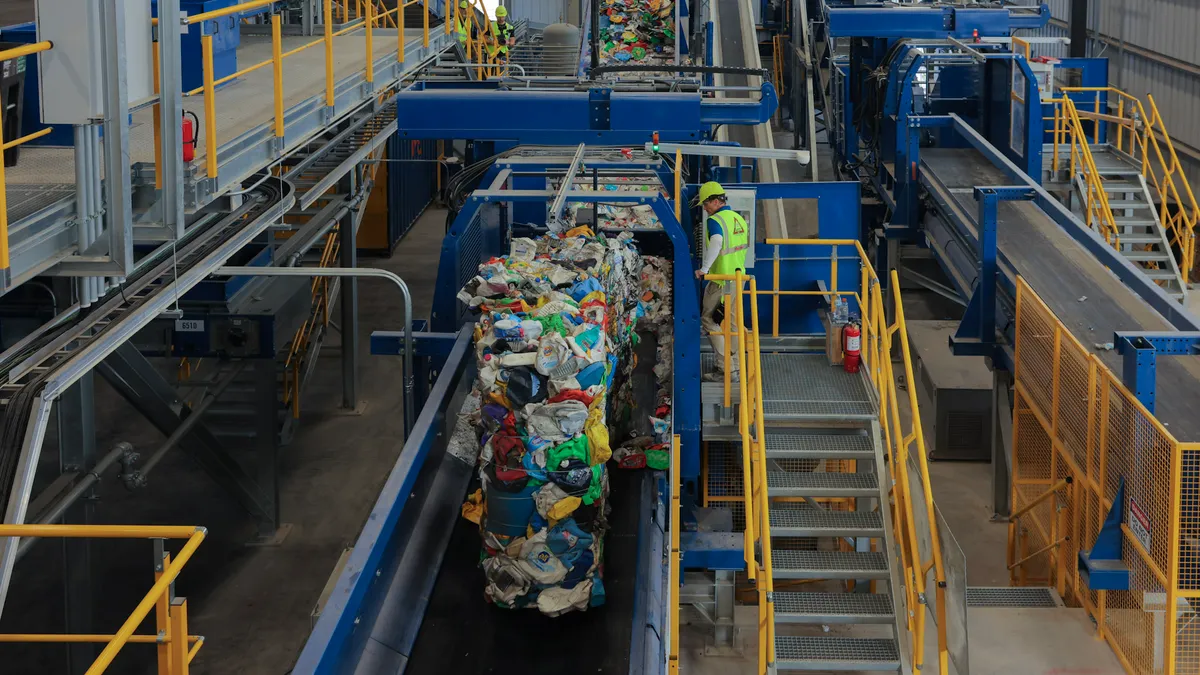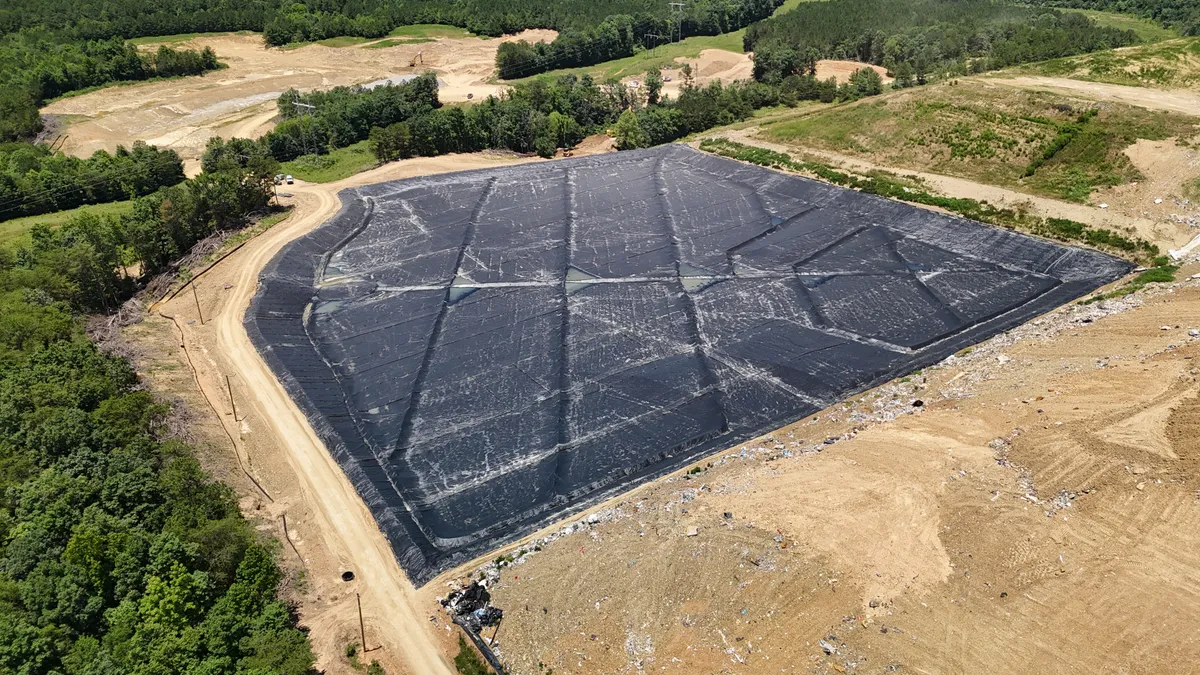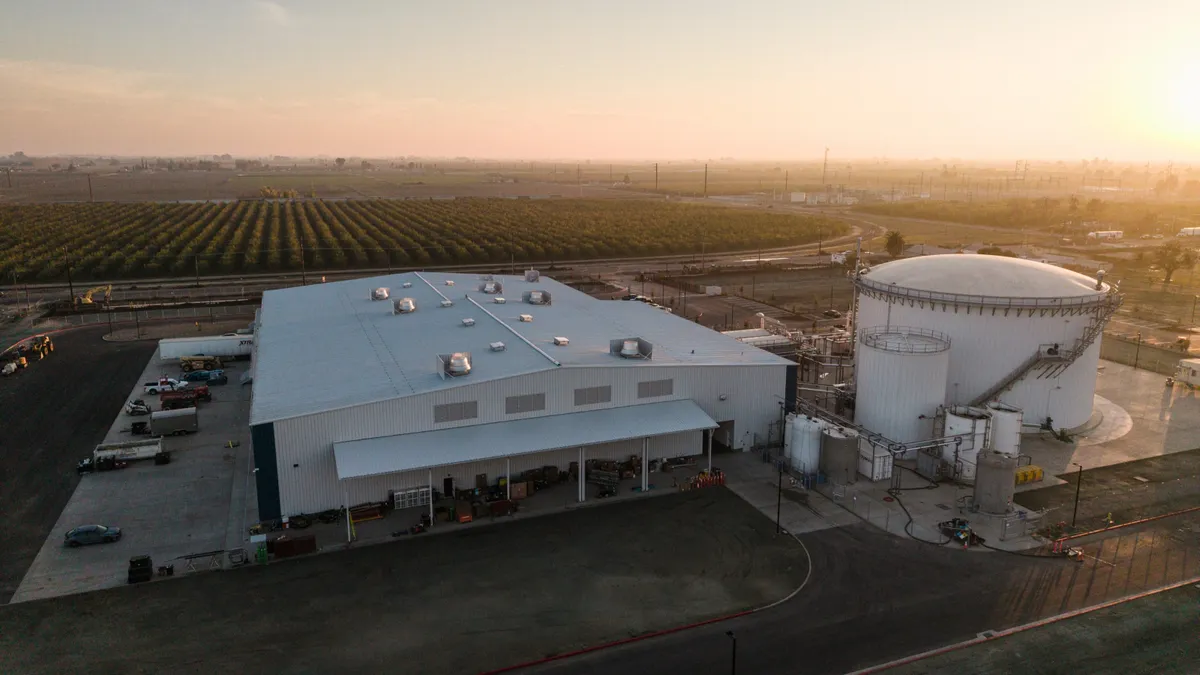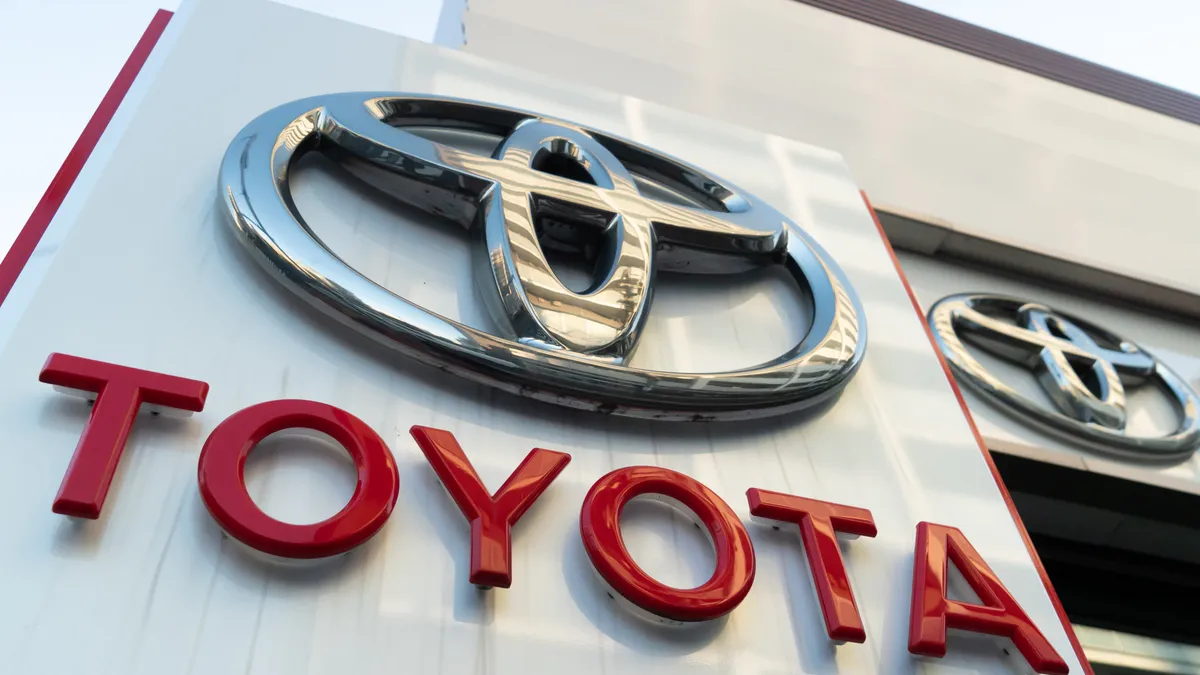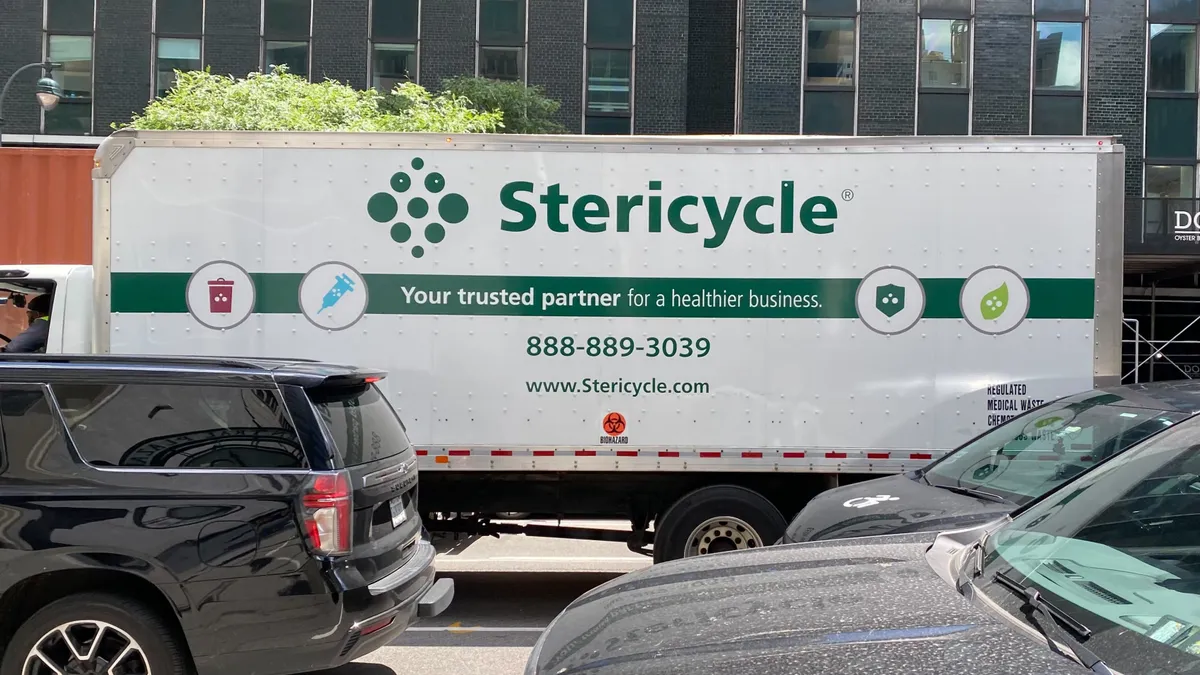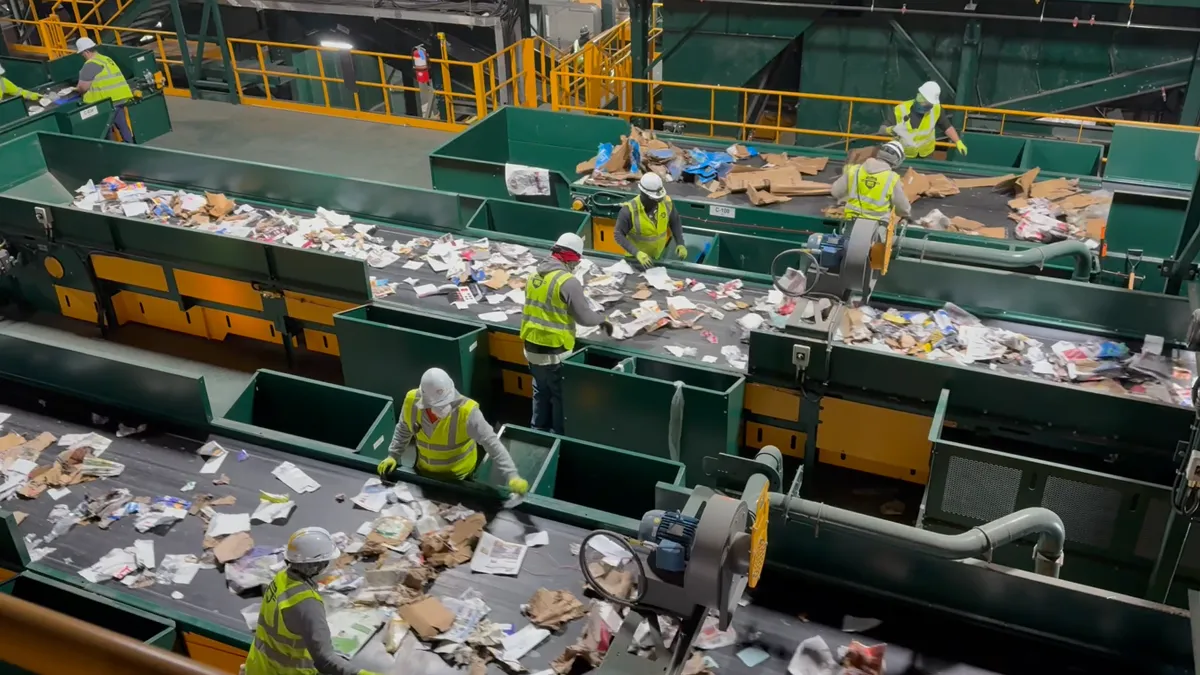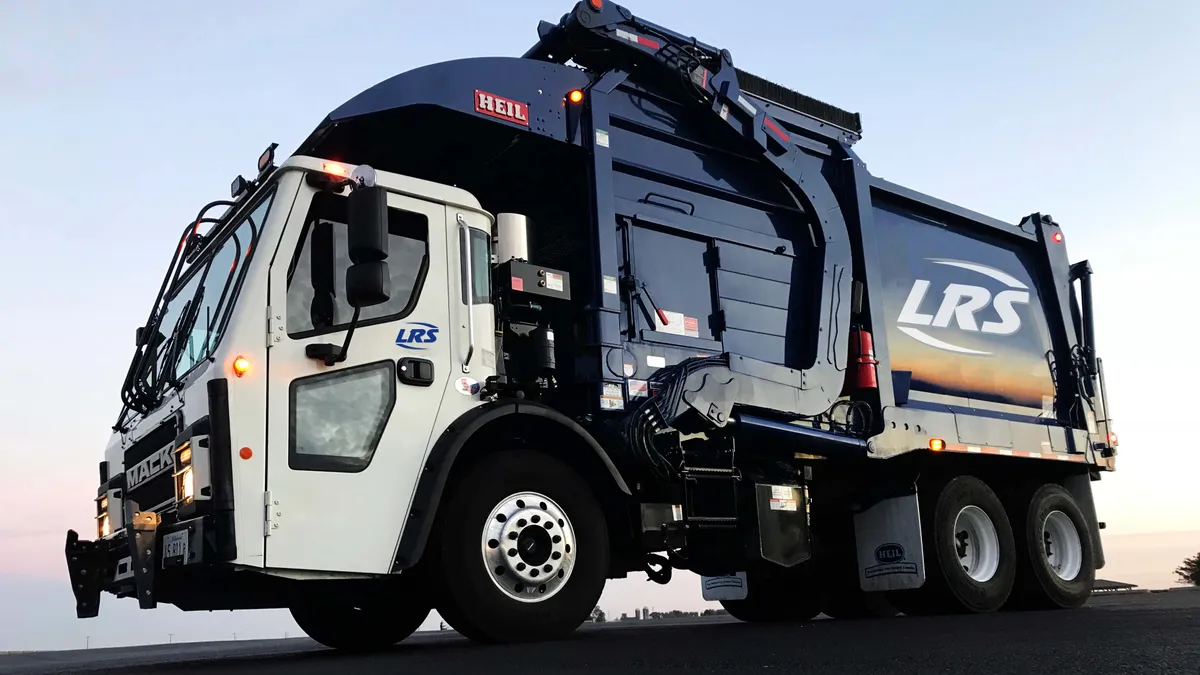After a tumultuous few years for the waste and recycling industry, 2024 will hopefully be marked more by internal shifts than external macroeconomic shocks. The Waste Dive team is nevertheless expecting a busy year.
At the federal level, the U.S. EPA is expected to make multiple key decisions on PFAS while continuing to dole out historically high amounts of funding for recycling projects of all kinds. Meanwhile, states are implementing policies on industry concerns that include extended producer responsibility and organics processing infrastructure.
We’re also continuing to track the business environment, including mergers and acquisitions and the growth of private equity investment.
We welcome your thoughts on these trends or any others. Please email us at waste.dive.editors@industrydive.com.
How the economy affects operations and M&A
After years of complex operating conditions, from the pandemic to supply chain and inflation issues, could the economy return to some semblance of normalcy this year?
Waste and recycling service providers have reported incremental improvements in recruitment and retention, as well as in truck order timelines, all of which placed serious strains on operations in recent years. Interest rates also could be poised to come down.
In addition to helping daily operations, a more stable financial market could create new investment or expansion opportunities via M&A. While the industry’s largest players were well-positioned to make deals throughout last year, some smaller companies or private equity firms were more affected by challenging debt markets, and deals occurred at a more uneven pace in 2023.
S&P Global recently forecast the possibility for PE-driven deals to increase on a macro level, noting an “unprecedented” amount of available funding among certain major firms. The waste sector’s defensive nature remains attractive for PE and infrastructure firms alike. Analysts are watching not only the ongoing consolidation or growth opportunities in solid waste, but also the more fragmented environmental services segment this year.
Pending changes to U.S. antitrust policy could throw a curveball into the mix. The waste industry, among others, has come out against a proposal that could increase the cost and time involved in deal reviews. Current guidelines already prolong or otherwise affect deal timelines, industry participants say. If changes do occur, they could create additional opportunities for regional companies versus their larger competitors.
New EPR legislation, plus ongoing EPR implementation
2024 will shed more light on how EPR policies for packaging will impact industry operations. How will the industry adjust?
Colorado, Oregon, Maine and California are still implementing the nitty-gritty details of their EPR laws, deciding on key rules this year.
Meanwhile, Maryland and Illinois are both conducting needs assessments to provide data that could serve as the foundation of eventual EPR policies. Maryland’s advisory council is expected to submit recommendations by the end of the year, while Illinois plans to name its advisory council this month and submit final recommendations by the end of 2026.
At the same time, lawmakers are expected to introduce or reintroduce even more EPR for packaging bills throughout the country. Although such bills are becoming more common and lawmakers and stakeholders are becoming more familiar with the complexities of writing and passing such laws, experts don’t expect any easy wins.
Brand owners, producer responsibility organizations, industry groups, recycling facility operators and municipalities will likely weigh in on the same challenges that blocked EPR bills from passing last year. They are expected to debate issues such as state recycling infrastructure, control over materials, plastic reduction approaches and the role of chemical recycling.
Though EPR for packaging is likely to garner the most attention and the most controversy, EPR policies for some other types of items — think batteries, textiles, mattresses or paint — are expected to pop up in state legislatures, too.

Clarity on PFAS regulation and remediation
PFAS remediation and management could come into sharper focus this year as long-awaited EPA regulations on destruction and disposal techniques are expected to take shape.
National drinking water standards for certain per- and polyfluoroalkyl substances could be finalized as early as this month. These standards could be important to the waste industry because PFAS-containing leachate is typically handled at wastewater treatment plants.
The EPA could also designate two types of PFAS as hazardous substances sometime in March. The waste industry hopes to avoid potential liability and higher operational costs once the EPA makes this designation. Groups have tapped federal lawmakers for help in carving out exceptions for “passive receivers” of PFAS-containing material. Movement has been slow so far in Congress, but discussion is ongoing.
Meanwhile, private companies are offering more types of remediation technology and services for PFAS. More landfill operators could hire environmental services companies to provide PFAS remediation for leachate this year, while others may continue to invest in other infrastructure to take on leachate management themselves.
At the same time, the EPA is expected to update its guidance on landfilling, incineration or deep well injection of PFAS-containing material as well as potentially offer more insight into environmental effects. This could influence what types of remediation technologies — if any — waste companies will choose. It could also affect such companies’ business opportunities and competitive edge depending on what methods they emphasize.
RNG projects coming online
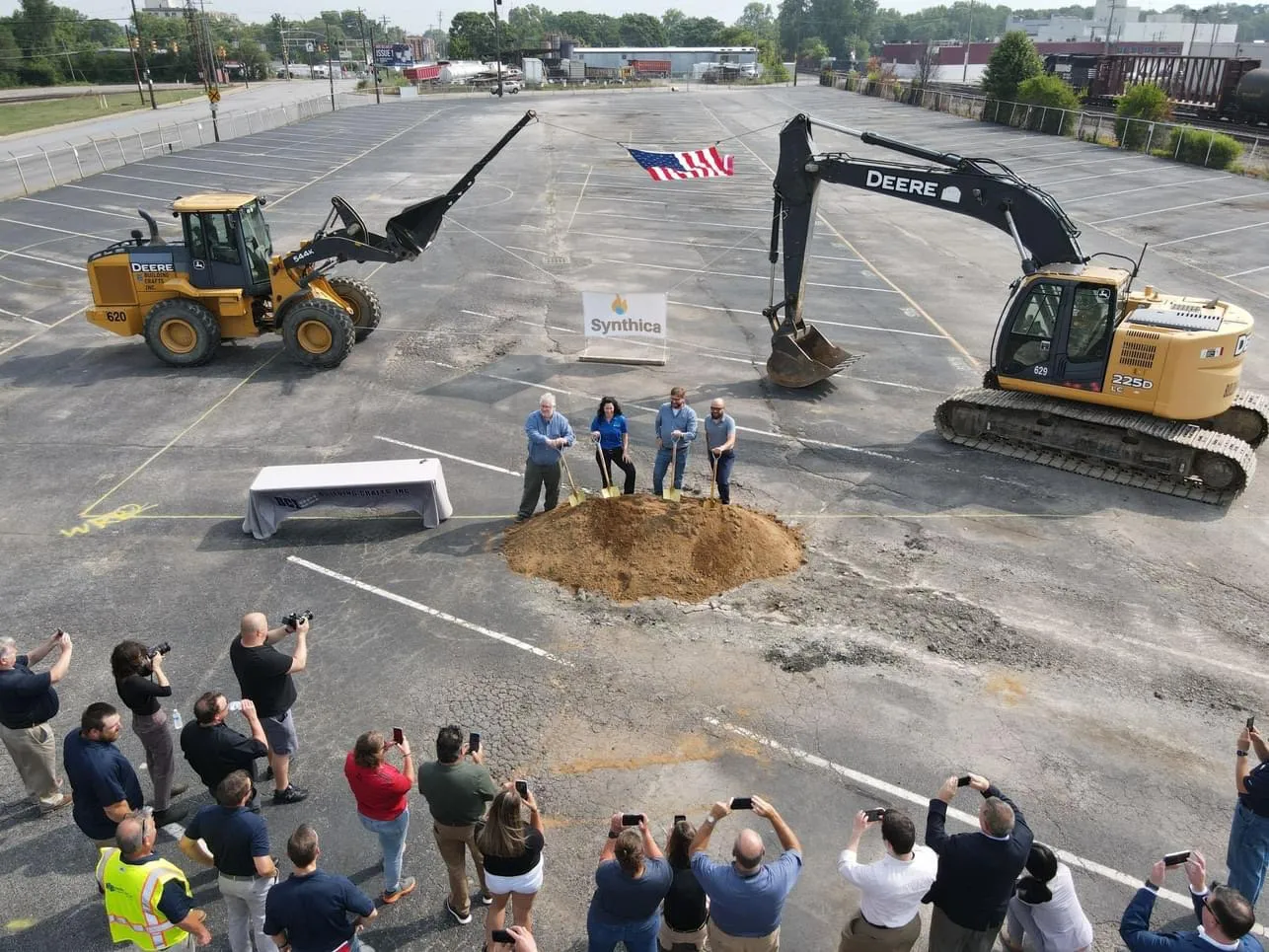
If 2022 was the year of major renewable natural gas developer acquisitions, and 2023 was the year of RNG facility planning, 2024 may be the beginning of a wave of project deliveries.
Last April, WM predicted it could earn more from RNG facilities at its landfills than it could from recycling as soon as this year. The country's largest landfill operator saw adjusted operating earnings before interest, taxes, depreciation and amortization at four test sites more than double in 2022. Those strong results led to its goal to build out 20 more RNG facilities by 2026. WM had six RNG sites operational last year and plans to have 11 by the end of this year, a spokesperson confirmed.
Other companies are also scaling up their RNG portfolios in 2024. Republic Services listed 16 landfill-gas-to-RNG projects in development in its sustainability report last year, including partnerships with Ameresco and BP's Archaea. Enbridge and Divert announced a $1 billion anaerobic digestion RNG partnership of their own. GFL Environmental is also making progress on its landfill-gas-to-RNG buildout, though it reported that progress slowed last year due to permitting difficulties. Waste Connections and Casella Waste Systems, among others, also have RNG project pipelines.
The EPA’s update to the Renewable Fuel Standard last summer is expected to provide more stability to the RNG industry, as it set RIN credit volumes for multiple years for the first time. Industry groups plan to continue their push to expand the program with renewable energy credits for electricity generated from biomass. They formed the Partnership for Electric Pathways to advance that goal in November.
While the RIN market will enjoy greater regulatory stability this year thanks to the extension, California's Low Carbon Fuel Standard credit market could see changes. In September, the California Air Resources Board proposed a series of amendments to the LCFS, including a phase-out of credits for avoided methane. Such credits have provided significant benefits to anaerobic digesters on dairy farms, but the change would stop certifying such projects for avoided emission credits in 2030 and phase out such credits from existing projects by 2040. CARB is expected to vote on the proposed rule in the first quarter of this year.
Organics processing capacity, spurred by legislation, is growing
As landfill operators work to extract value from existing landfill methane emissions, a growing body of research is fueling legislation designed to prevent organics from reaching landfills in the first place.
One report from the EPA released last year found that 58% of fugitive greenhouse gas emissions from landfills comes from wasted organics, while another listed landfilling as one of the least preferable options for unused organics. As a result, policymakers interested in reducing organics emissions are increasingly addressing not just waste in place but a growing range of diversion and separated organics processing tactics.
Last year, the federal government disbursed a record amount of funding for recycling infrastructure, millions of dollars of which went to organics recycling projects. In 2024, several of those projects are expected to take a step forward, and the EPA will continue to take applications on a rolling basis for additional funding.
Previously announced EPA grant funding is slated to support a range of projects, including the creation of a composting site in Baltimore, an expansion of one of the only large-scale composting facilities in Iowa and the growth of a brush composting program in Alaska. Meanwhile, New York City also received EPA grant funding to support education and outreach for its growing curbside organics collection program, which the city plans to roll out to the Bronx, Manhattan and Staten Island this fall.
Movement continues on the state level as well. The next phase of Maryland’s organics diversion mandate for large food waste generators kicks in this year. Under California’s SB 1383, jurisdictions like Los Angeles will begin enforcing penalties for commercial and multifamily buildings that don’t follow organics recycling laws. California will also increase organics processing capacity this year — in December, CalRecycle announced it would disburse $130 million in grants to more than two dozen local projects that improve municipalities’ compliance with the organics diversion law.


